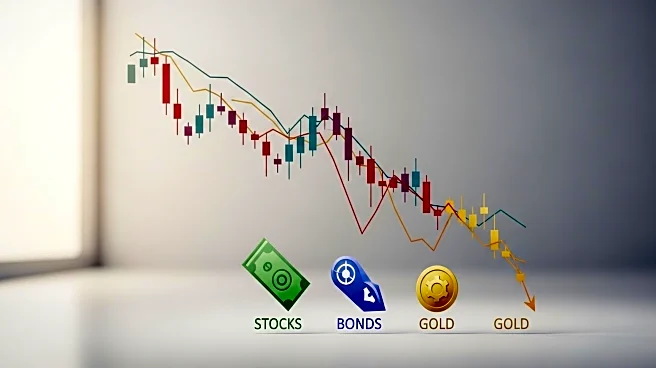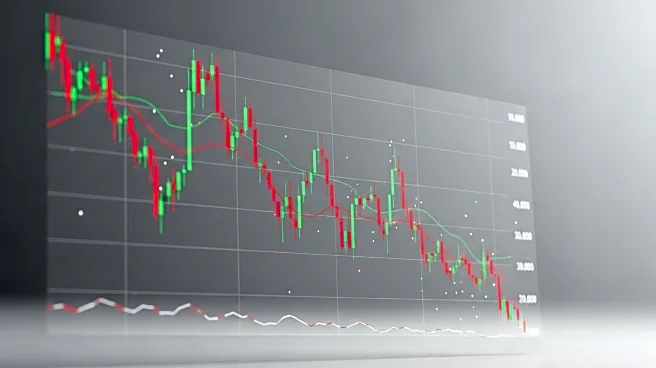What is the story about?
What's Happening?
The S&P 500 is showing signs of a potential market pullback, according to DataTrek Research co-founder Nicholas Colas. He highlights that sector correlations within the S&P 500 are nearly two standard deviations below their long-term average, currently at 0.64. This low correlation suggests that 'excessive animal spirits' are driving the market, with investors heavily favoring the tech sector and AI plays while neglecting other areas. Historically, similar low correlation levels have preceded market declines ranging from 5% to 18%. Colas notes that these instances have occurred three times since the current bull market began in 2023, each followed by significant index losses. The S&P 500 recently hit a fresh all-time high, but the historical context of October's volatility, including the infamous Black Monday crash of 1987, adds to concerns about potential negative macro surprises.
Why It's Important?
The potential market pullback indicated by the S&P 500's sector correlations could have significant implications for investors and the broader economy. If the market experiences a decline similar to past instances, it could affect investor confidence and lead to reduced investment in sectors outside of technology and AI. This could result in a more volatile market environment, impacting financial planning and investment strategies. Additionally, the historical volatility associated with October could exacerbate these effects, leading to increased caution among investors. The broader economic impact could include shifts in capital allocation and potential disruptions in financial markets, affecting both institutional and retail investors.
What's Next?
Investors and market analysts will likely monitor sector correlations closely for further signs of a pullback. As October approaches, known for its historical volatility, stakeholders may adjust their strategies to mitigate potential risks. This could involve diversifying portfolios to reduce exposure to high-risk sectors or increasing liquidity to navigate potential market fluctuations. Additionally, any significant macroeconomic events or changes in Treasury yields could influence market dynamics, prompting further analysis and strategic adjustments by investors.
Beyond the Headlines
The focus on 'animal spirits' and sector correlations highlights the psychological and behavioral aspects of market dynamics. Investor sentiment and optimism can drive market trends, but excessive enthusiasm may lead to overvaluation and subsequent corrections. Understanding these psychological factors is crucial for developing robust investment strategies that account for both quantitative data and market sentiment. This underscores the importance of balancing technical analysis with an awareness of investor behavior and market psychology.
AI Generated Content
Do you find this article useful?













